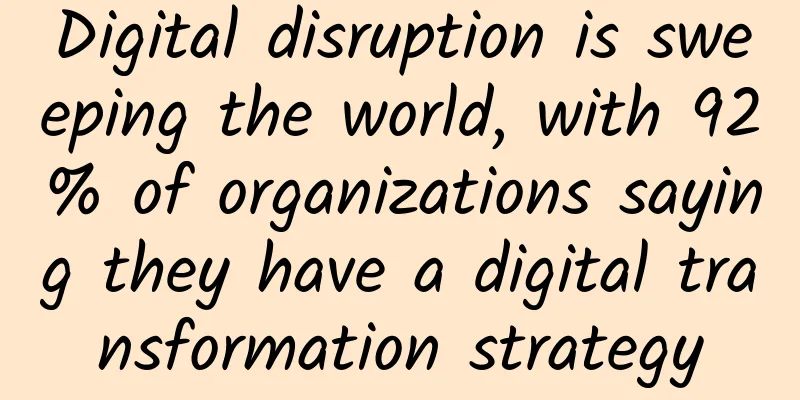GDPR brings opportunities to improve overall security and optimize business processes

|
Privacy has been a major concern for businesses lately, especially with the General Data Protection Regulation (GDPR) set to take effect on May 25. Companies doing business in Europe are now held accountable for the damage caused by data breaches and are forced to do everything they can to stay compliant.
Gartner predicts that European companies will spend an average of $1.4 million on compliance, while U.S. companies will spend $1 million. This expense is well worth it—fines for GDPR violations can be many times greater than the cost of compliance, not to mention significant legal fees, additional insurance premiums, and damage to brand reputation. Given the human and financial investment involved in compliance, as well as the risk of fines in the event of a data breach, it is now clear that companies need to prepare for the new reality they face. GDPR should not be a cause for anger. Instead, companies should view the new regulations as an opportunity to strengthen their business processes and better prevent data breaches and cyberattacks. At the same time, the entry into force of GDPR also brings companies an opportunity to use its requirements as a baton to strengthen the company's overall security and compliance posture. The three main benefits that GDPR can bring to businesses are: 1. Exclusive brand protection The massive cyberattacks on Equifax, Yahoo, and other large companies in the past few years have severely damaged the brand and reputation of these companies. If these cyberattacks occur after the implementation of the new regulations, the subsequent impact will also be large fines, which will force corporate security teams to take extra measures to protect the company's public image. This is a good thing because it will force companies to consider security when establishing, changing, or expanding their business processes. 2. Overall safety considerations GDPR presents an opportunity for security teams to develop and deploy robust processes across the company to detect, investigate, respond to, and report threats. Integrating security into business processes from the outset, rather than adding it as an afterthought, can help smooth operations while better protecting against internal and external threats. 3. Promote innovation GDPR compliance will undoubtedly improve data processing and threat detection, allowing companies to accelerate internal and external innovation and collaboration - because companies have greater confidence in the integrity and security of their business processes. With these benefits in mind, how can organizations update their networks, security processes, and operations to ensure they can fully capitalize on the opportunities GDPR presents them? The following three key steps can be used as a reference for companies: 1. Get the visibility you need GDPR basically governs what types of data can be collected and recorded, as well as how that data is processed and stored. Companies need to have complete visibility into their infrastructure and business processes so that they can effectively monitor and protect data across the EU and provide a complete view of the company's global network. However, regardless of the environment, a fundamental part of GDPR is that data must be anonymized, limiting how much data can be seen. The need for broad visibility and the need to obfuscate sensitive information may seem contradictory. But there are tools and methods that can reconcile the two. Data encoding, originally developed to protect personally identifiable information (PII) data, is well suited for GDPR compliance and is a feature of some advanced network packet processing engines. IT and security teams can use this feature to set any data type or offset to be encoded - credit card records, ID numbers, IP addresses, etc. In addition, a high-visibility architecture that supports the geolocation of user data can also help identify traffic originating from the EU. Data encoding and geolocation information (with or without encryption) are combined to effectively drive GDPR compliance. 2. Encryption is important Data encryption is the top priority of data protection. The trend of fully encrypted Internet is continuing, and under GDPR, data encryption is clearly regarded as a legitimate way to solve personal data security issues, while also being able to avoid prosecution to a certain extent in the event of a data breach. However, some companies are concerned that threats may be hidden in SSL encrypted data streams, because some traditional security devices and monitoring solutions do not have the ability to process encrypted data streams. However, advanced network packet proxies can decrypt data packets and send plaintext data to security and monitoring solutions, allowing them to sniff out threats and malicious payloads, re-encrypt the data and continue forwarding. Encryption and data encoding can protect stored data and data in transit. 3. Ensure integrity, availability, and resiliency A comprehensive visibility architecture does more than just monitor data; it is also critical in protecting enterprises from increasingly advanced cybersecurity attacks. If an enterprise does not have complete visibility into all traffic flowing through its network, cybercriminals can exploit loopholes and blind spots to infiltrate the network and steal data. Visibility helps security teams reduce the overall cyber attack surface and plug defense gaps. Security resilience is also key to GDPR, and visibility ensures security resilience by quickly discovering and resolving anomalies or ongoing attacks. This speeds up response to potential data breaches, limits damage and minimizes risk. GDPR is one of the most far-reaching and complex regulations in the compliance field in a long time, and it is not easy to implement the necessary changes in companies to comply with GDPR requirements. However, as long as companies take the right approach to strengthen their security processes, GDPR will become an opportunity for them to strengthen their security posture, and the effect is far better than simply checking the compliance list. |
<<: Share: Construction skills of integrated wiring system
>>: Operators’ Path to Artificial Intelligence
Recommend
How to configure OVN load balancer?
Translator profile: Zheng Minxian works for Nooyu...
5G is the new infrastructure, but it also faces practical problems
Labs Guide When we browse Moments and watch video...
CloudCone: KVM in Los Angeles MC Data Center starts at $1.99 per month, supports Alipay/PayPal
CloudCone is a foreign VPS hosting company founde...
The ultimate form of 5G and its ferryman
Recently, I found that many of my friends have su...
CloudCone: $1.99/month KVM-768MB/15GB/3TB/Los Angeles MC Data Center
CloudCone's 2021 flash sale has started again...
Asia Cloud: CN2 GIA cloud servers in the United States/Japan/Hong Kong starting from 24 yuan/month, with optional data centers in Shenzhen/Guangzhou/Fuzhou/Shiyan, etc.
AsiaYun is a domestic business founded in 2018. I...
The roadmap for building a digital China in the next five years has been released to develop seven key industries including cloud computing
[[385931]] The draft outline of the 14th Five-Yea...
Beyond 5G: A revolutionary leap toward the frontier of 6G network sensing
In the rapidly evolving world of telecommunicatio...
DMIT: $100/year Triple Network CN2 GIA-2GB/40GB/2TB/Los Angeles CN2 GIA
Today, many friends are sharing the last promotio...
TCP access layer load balancing, high availability, and scalability architecture
Today, let’s have a systematic discussion about T...
Understand the OSI model in five minutes
The Open Systems Interconnection (OSI) model is a...
South Korea pushes for independence of 6G core technology
After South Korea launched the world's first ...
A brief discussion on SD-WAN troubleshooting
What do you do when your SD-WAN has a problem or ...
How to lay the foundation for closed-loop automation
Today, many enterprises are digitally transformin...
Ministry of Industry and Information Technology: Local governments should work harder on 5G applications
"Although various regions are now making gre...









